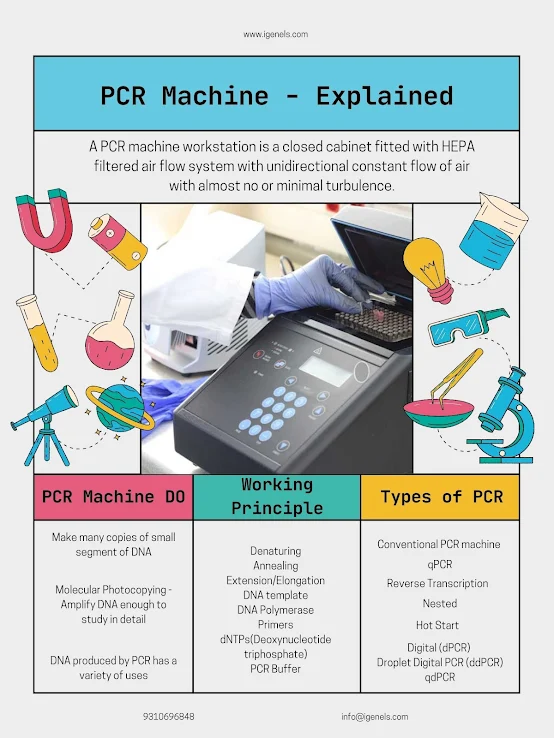A gel documentation system is mainly used in molecular biology labs with an aim for imaging and documenting nucleic acids and proteins that are suspended in polyacrylamide or agarose gels. These gels are stained with fluorophores like ethidium bromide or SBYR green. Most of us haven't come across gel documentation devices in real life as they are only used for scientific purposes. Simplistically, a gel doc comprises a light source, CCTV camera, transilluminator, and a dark room to protect the body from UV rays. For this reason, it is also known as a gel image system or a gel imager.
Where are they used?
Gel documentation machines are widely used in genetic engineering laboratories. Be it colleges, protein-generating pharmaceutical industries, or genetic engineering research institutes. Moreover, gel documentation mechanisms are also used in clinical research labs and forensic laboratories.
Why should you use the gel documentation system?
Gel imaging is all about recording and identifying nucleic acid and labeled protein in diverse media like agarose, cellulose, and acrylamide. Microbiologists use this system for the rapid assessment of gels post electrophoresis and thereby, saving chemicals and time. It leads to visualization in 3-4 minutes. Gel documentation devices use stain-free technology that makes them pocket-friendly in every aspect.
Types of gel documentation systems
There are various types of gel documentation systems based on the sample type and throughput. Also, these systems come in different configurations and specifications that come in handy for the users. So, let's explore the diverse types of documentation systems:
- Chemiluminescence imaging system: Those who know a little bit about molecular biology understand that western blotting is necessary for the elimination of proteins based on the parameters like molecular weight. Laboratory technicians use chemiluminescence as an identification method for a western blot during occurrences of high sensitivity. With the advent of chemiluminescence imaging systems, things have become easier for scientists. This new-age technique further optimizes sensitivity, speed, and signal stability by a significant margin.
- Automated blot analysis: These systems are sensitive imagers that implement specialized software in assessing western blot data. With these systems in place, scientists can perform automation like light selection, focusing, selection, exposure, and acquisition. Here, researchers get a wide variety of choices ranging from UV, RGB color, infrared, fluorescence, and chemiluminescence. By using this system, molecular biologists can measure multiple targets simultaneously.
- Digital gel imaging systems: These systems are used to measure and record stained acrylamide gels on a digital platform. Not only do they provide effective data storage, but also authentic quantification of samples. These systems have various types of detectors like ethidium bromide (UV), visible light, chemiluminescence, fluorescence, and densitometric for quantitative evaluation of protein, microplates, nucleic acid brands, and dot blots.
- Multiplex fluorescence imaging systems: These systems are used in the illumination of blotting membranes and identification of the signals over background noise. Biologists also implement multiplex fluorescence imaging systems to capture the blot image and signal analysis. They contain a light source, a photosensor, and emission filters.
Benefits of using a gel doc system
The prime advantages of using a gel doc system are listed below:
- Gives more information from sample materials and enhances an experiment's reproducibility.
- Convenient workflow.
- A CFR-compliant tool
- Time-saving
- Workflow convenience
- Increased data sharing with colleagues
- More quantitative than qualitative interpretation of data
A gel documentation machine is necessary for any lab performing protein analysis. In most instances, these systems come in diverse specifications with a customization option based on the level of application. Hence, it's always advisable to buy the one streamlined to your laboratory's needs while at the same time focusing on the budget.







